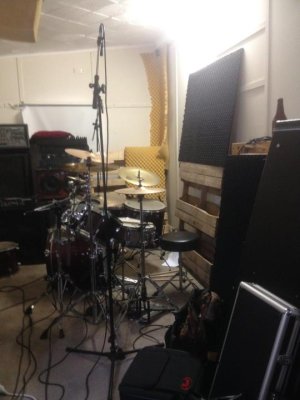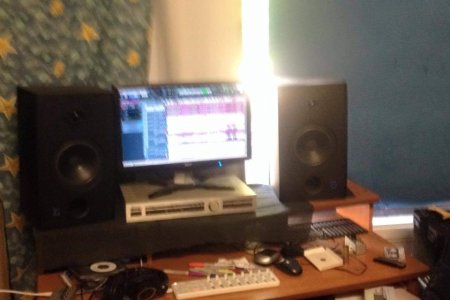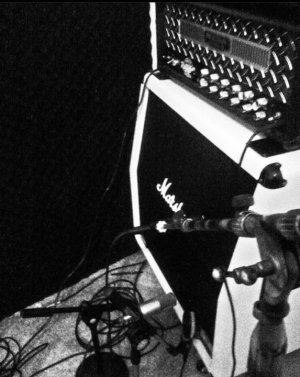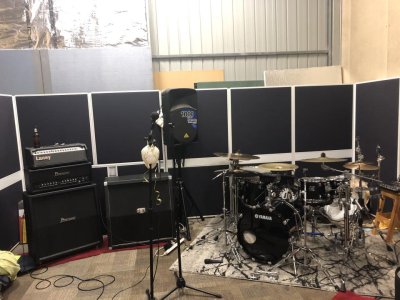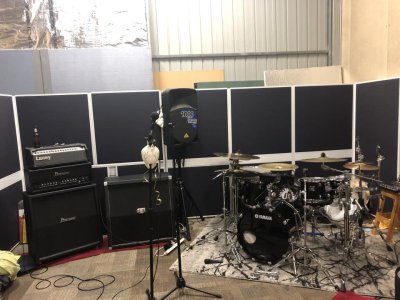Inflames626
New member
Here's why I don't like a Recto sound by itself.
Admittedly they were going for a warmer, more vintage sound, but this album wasn't as well received. Not sure why they reissued it. It didn't need to be.
Low end is flabby and woofy.
https://www.youtube.com/watch?v=LkGjKT3Jb-I&list=OLAK5uy_mUXiPi09CWJdkAp53li6gshQ2uMZR0dEg&index=3
vs. this which sounds thinner, tighter, and brighter with more upper mids:
https://www.youtube.com/watch?v=_-deRh1VGYA
Regarding Halo I hadn't heard the new record--I didn't think it was released yet.
It's not bad, but again, Niclas does the solo, and the tempo remains fairly slow. The pre chorus riff gets going for a while but then goes away for the sake of the main melody. By stripped down guitar parts I mean like at 0:55 where there's pretty much nothing interesting going on--again--to make room for the vocal.
The new Halo reminds me of DT's Misery's Crown off the top of my head. Just very mid tempo stuff, except the DT had more parts and melodies:
https://www.youtube.com/watch?v=02Plp_bDPPI
vs. in the older stuff it is slightly faster, busier, more intricate and energetic, mainly via the trills and the riff at 1:40.
https://www.youtube.com/watch?v=EI57bntD-rU
All of this comes back to the main point, I think, that Halo is music that is meant to be played live by two guitarists, so it is deliberately simplified to that end.
Going back to the Recto, Katatonia probably had one of the most crushing rhythm tones I had heard in a long time, and there I could actually here it was quad or even six tracked. A literal wall. II even get some Korn vibes from it.
https://www.youtube.com/watch?v=IbdFkl7t2i8
And one of the most interesting drum parts I have heard is Soil's Song. Sounds like it has some polyrhythms going. Really intricate and difficult for doom metal, something that isn't the most technical genre.
https://www.youtube.com/watch?v=zaNAKs5YS_M
Admittedly they were going for a warmer, more vintage sound, but this album wasn't as well received. Not sure why they reissued it. It didn't need to be.
Low end is flabby and woofy.
https://www.youtube.com/watch?v=LkGjKT3Jb-I&list=OLAK5uy_mUXiPi09CWJdkAp53li6gshQ2uMZR0dEg&index=3
vs. this which sounds thinner, tighter, and brighter with more upper mids:
https://www.youtube.com/watch?v=_-deRh1VGYA
Regarding Halo I hadn't heard the new record--I didn't think it was released yet.
It's not bad, but again, Niclas does the solo, and the tempo remains fairly slow. The pre chorus riff gets going for a while but then goes away for the sake of the main melody. By stripped down guitar parts I mean like at 0:55 where there's pretty much nothing interesting going on--again--to make room for the vocal.
The new Halo reminds me of DT's Misery's Crown off the top of my head. Just very mid tempo stuff, except the DT had more parts and melodies:
https://www.youtube.com/watch?v=02Plp_bDPPI
vs. in the older stuff it is slightly faster, busier, more intricate and energetic, mainly via the trills and the riff at 1:40.
https://www.youtube.com/watch?v=EI57bntD-rU
All of this comes back to the main point, I think, that Halo is music that is meant to be played live by two guitarists, so it is deliberately simplified to that end.
Going back to the Recto, Katatonia probably had one of the most crushing rhythm tones I had heard in a long time, and there I could actually here it was quad or even six tracked. A literal wall. II even get some Korn vibes from it.
https://www.youtube.com/watch?v=IbdFkl7t2i8
And one of the most interesting drum parts I have heard is Soil's Song. Sounds like it has some polyrhythms going. Really intricate and difficult for doom metal, something that isn't the most technical genre.
https://www.youtube.com/watch?v=zaNAKs5YS_M

